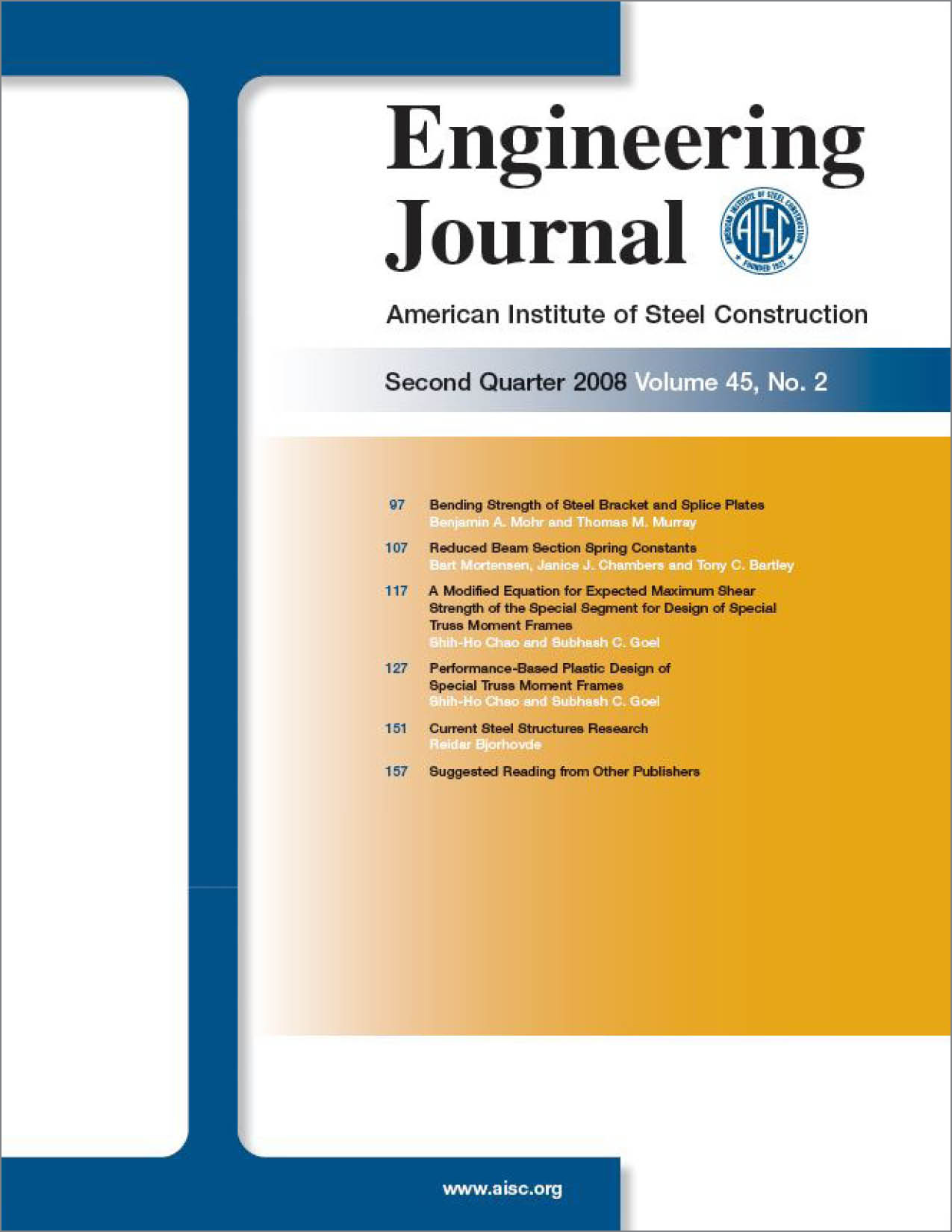Performance-Based Plastic Design of Special Truss Moment Frames
DOI:
https://doi.org/10.62913/engj.v45i2.933Keywords:
Seismic Design, Structural And building Systems, Plastic DesignAbstract
This paper presents the results of a study in which a recently developed performance-based plastic design (PBPD) methodology was used to design the special truss moment frame (STMF) system rather than conventional elastic method. This newly developed performance-based method has been successfully applied to moment frames and also extended to eccentrically braced frames, buckling-restrained braced frames, and concentrically braced frames. The procedure begins by selecting a desired yield mechanism for the frame. Design base shear and lateral forces are determined from input spectral energy for a given hazard level needed to monotonically push the structure in the yielded state up to a pre-selected target drift. The frame members are then designed by following the plastic design method in order to develop the needed strength and the intended yield mechanism. A new seismic design lateral force distribution based on nonlinear dynamic behavior is also presented. The proposed design procedure was validated by extensive nonlinear dynamic analyses for a number of ground motion records. The results confirm the validity of the proposed method for the study STMFs in terms of meeting all the performance design objectives, such as target drifts and intended yield mechanism. An important advantage of the PBPD method is that, generally, no nonlinear analysis is needed to check the structural performance after the initial design.

